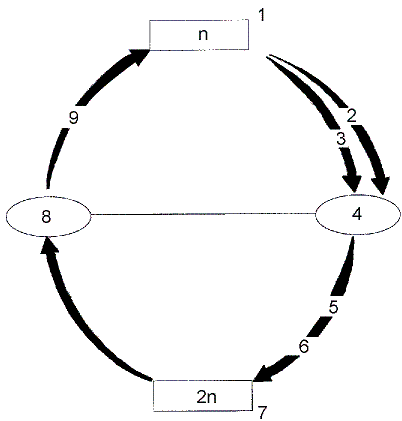Which of the following primary succession
events led to the formation of the tundra?
a. large tsunamis
b. glacial retreat
c. volcanic activity
d. the breaking up of Pangaea
e. flooding caused by melting ice
B
You might also like to view...
The different alleles in human blood type are a demonstration of
a. incomplete dominance. b. codominance. c. dominance and codominance. d. dominance and incomplete dominance. e. dominance, codominance, and incomplete dominance.
Consider the life cycle shown in Figure 27-2. If the boxes labeled “n” and “2n” represent multicellular structures, this life cycle could be representative of all of the following except:

a. ferns
b. club mosses.
c. horsetails.
d. hornworts.
e. algae
Individuals with Turner syndrome (monosomy X) have only one sex chromosome–a single X chromosome. Such individuals are produced when nondisjunction results in a gamete with no sex chromosome,
which subsequently fuses with a normal gamete. What would be the sex chromosome complement of an individual produced by fusion of a normal gamete with the gamete that ended up with the extra chromosome missing from the Turner syndrome patient? A) XXX B) XXY C) XYY D) XY E) Either A or B would be a possible chromosome complement.
In biological transmission, pathogens reproduce in the vector.
a. true b. false